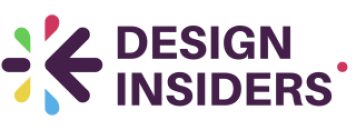
Understanding the Importance of CRO in Ecommerce
Why Conversion Rate Optimization Matters
In the realm of ecommerce, conversion rate optimization (CRO) is a critical component that can significantly impact the success of a business. At its core, CRO is about increasing the percentage of visitors to your website who take a desired action, such as making a purchase. This not only affects sales but also plays a role in overall ecommerce growth. The benefits of CRO extend beyond just boosting sales numbers. Effective conversion optimization involves improving user experience, which in turn can lead to higher customer satisfaction and retention. When customers have a seamless and enjoyable shopping experience, they are more likely to return, driving further growth. Moreover, CRO is a data-driven process. By leveraging tools like Google Analytics and other third-party platforms, businesses can gain valuable insights into user behavior and conversion patterns. These insights allow for informed decision-making and optimization strategies that ultimately enhance conversion rates.The Impact of Enhancement in User Experience
Investing in CRO not only enhances the conversion rate but also improves the overall user experience. When businesses focus on creating an intuitive interface and effective product messaging, it increases the likelihood of converting visitors into customers. This approach aligns with best practices in digital marketing and applies data analytics to maximize results. Ecommerce growth is further supported by employing growth programs that focus on testing and data analysis. Through meticulous testing and optimization, CRO can identify what resonates best with your audience, refining the business strategy to target high-impact areas. For more insights on enhancing user experience to boost conversion rates in Atlanta, check out this informative article.The Role of Design in CRO
The Intersection of Design and Conversion Optimization
Design plays a pivotal role in Conversion Rate Optimization (CRO) for ecommerce businesses. It's not just about aesthetics; it's about creating a seamless user experience that guides customers towards making a purchase. Effective design can significantly impact conversion rates by enhancing user engagement and reducing friction in the buying process.
One of the key aspects of design in CRO is understanding user behavior. By leveraging data analytics, businesses can gain insights into how customers interact with their website. This data-driven approach allows for targeted design improvements that align with customer expectations and preferences. Tools like Google Analytics and other third-party CRO tools can provide valuable insights into user behavior and help identify areas for optimization.
Design Elements That Drive Conversion
Several design elements are crucial for optimizing conversion rates:
- Product Messaging: Clear and compelling product messaging is essential. It should communicate the value proposition effectively and resonate with the target audience.
- Visual Hierarchy: A well-structured visual hierarchy guides users through the site, highlighting important information and calls to action.
- Responsive Design: With the increasing use of mobile devices, ensuring a responsive design is critical for providing a consistent user experience across all platforms.
- Load Speed: Fast-loading pages are crucial for retaining user attention and reducing bounce rates.
For more insights on how design can enhance user experience and boost conversion rates, you can explore this resource.
Testing and Iteration
Continuous testing and iteration are fundamental to successful CRO. A/B testing allows businesses to experiment with different design elements and measure their impact on conversion rates. By analyzing the results, businesses can make informed decisions about which design changes lead to the highest impact on ecommerce growth.
Incorporating best practices in design and CRO can lead to significant improvements in conversion rates and overall business growth. As part of a comprehensive CRO strategy, design should be aligned with the broader goals of the ecommerce program, ensuring that every element works together to enhance the customer experience and drive conversions.
Leveraging CXL for CRO Mastery
Maximizing CRO Potential with CXL
To effectively master conversion rate optimization (CRO) for ecommerce growth, leveraging the capabilities of CXL is a strategic move. Known for their expertise in CRO, CXL provides comprehensive programs that emphasize data-driven approaches, enabling businesses to optimize their conversion strategies effectively. CXL's extensive resources and tools, particularly their comprehensive educational offerings, are invaluable for those aiming to elevate their ecommerce performance. Their approach is grounded in analytics and real-world testing, ensuring that the insights gained are directly applicable to your business context.- Educational Programs: CXL offers specialized courses and expert-led workshops, focusing on high-impact CRO strategies. These programs are designed to enhance your understanding and application of key concepts like user behavior analytics and conversion optimization.
- Tools and Resources: A variety of CRO tools are available through CXL, aimed at honing in on optimization efforts. These tools can be instrumental in understanding customer interactions, shaping product messaging, and refining ecommerce growth initiatives.
- Partnering for Success: Engaging with the CXL Institute can provide access to a premium suite of services, including advanced data analytics, third-party integrations, and personalized CRO solutions.
Key CRO Strategies for Ecommerce Success
Essential Techniques for Boosting Conversion Rates
Navigating the world of conversion rate optimization (CRO) can be a game-changer for ecommerce businesses aiming to achieve significant growth. By focusing on strategies backed by data, companies can effectively enhance their conversion rates and drive overall business success. Here are some critical CRO strategies that can propel ecommerce growth:- Utilize Data Analytics for Insightful Decisions: Leveraging tools like Google Analytics empowers businesses to understand user behavior and conversion paths better. This data-driven approach can pinpoint barriers to conversion, allowing for targeted improvements.
- Emphasize A/B Testing: By testing different versions of web pages, ecommerce platforms can identify high-impact elements that resonate with their audience. This testing ultimately leads to optimized customer experiences and increased conversion rates.
- Refine Product Messaging and Content: Clear, persuasive messaging and well-structured content can significantly influence purchase decisions. Ensure that product descriptions, calls-to-action, and overall messaging align with customer needs and preferences.
- Streamline the Checkout Process: Reducing the number of steps in the checkout process and offering multiple payment options can minimize cart abandonment and enhance conversion rates.
- Implement Personalization Strategies: Tailoring the shopping experience to individual customer preferences can increase engagement and conversion. Using personalized recommendations and targeted campaigns creates a more meaningful user connection.















